Introduction
In the dynamic world of educational technology, a groundbreaking innovation has captured the attention of educators and parents alike: Generative Pre-trained Transformers, commonly known as GPTs. These sophisticated AI models, developed by OpenAI, offer unprecedented opportunities for enhancing educational experiences. For parents eager to support their children’s academic journeys, understanding and utilizing GPTs could be pivotal.
GPTs for Parents: Transforming Home Education
GPTs represent a remarkable advancement in AI technology, offering customizability for diverse applications, including education. Imagine a GPT tailored specifically for children’s learning – from simplifying complex math concepts to fostering language skills through interactive exercises. This adaptability of GPTs empowers parents to create personalized educational tools that resonate with their child’s unique learning style and interests.

Navigating the World of GPTs: A Parent’s Guide
The beauty of GPTs lies in their user-friendly interface, allowing even those with minimal technical background to build and customize their own AI-based learning aids. With OpenAI’s intuitive platform, parents can easily develop a GPT that aligns with their child’s educational needs, infusing both instructional content and engaging problem-solving activities into their daily learning routine.
As we embark on exploring the vast potential of GPTs in education, the next sections of our guide will delve deeper into how these AI models can be effectively integrated into your child’s learning environment. We’ll uncover practical ways to harness the power of GPTs at home, ensuring that your involvement in your child’s education is both impactful and innovative.
Section 1: Demystifying GPTs for Parents
In this section, we aim to unravel the complexities of Generative Pre-trained Transformers (GPTs) and illustrate their transformative role in educational settings. Understanding this technology is the first step for parents to effectively incorporate it into their children’s learning process.
Simplifying the GPT Concept
GPTs are essentially advanced AI models capable of understanding and generating human-like text based on the input they receive. In simpler terms, think of them as highly intelligent virtual tutors that can converse, teach, and adapt to your child’s learning style. In the educational sphere, GPTs are not just tools for information delivery; they are interactive partners in learning, capable of providing personalized educational content and feedback.
GPTs in Action: Enhancing Learning
The real power of GPTs in education lies in their versatility and adaptability. They can assist in a wide range of subjects, from solving complex mathematical equations to conducting language practice sessions. GPTs make learning more interactive and engaging, which is crucial in maintaining the attention and interest of young learners. They can present information in various formats, adjust the difficulty level of the content, and even offer creative storytelling or problem-solving tasks, making education a dynamic and enjoyable experience.
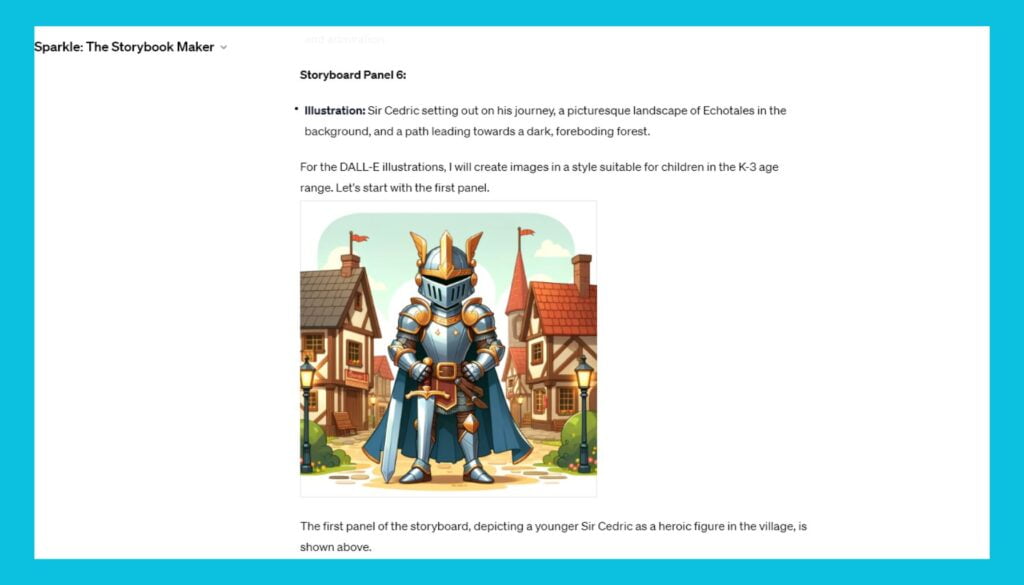
Section 2: Practical Ways to Use GPTs at Home
In this section, we will explore how parents can practically use Generative Pre-trained Transformers (GPTs) at home to enhance their children’s learning. This guidance is based on the capabilities and customization options available through platforms like OpenAI’s GPTs.
Step-by-Step Guidance for Parents
Understanding GPTs: Begin by familiarizing yourself with what GPTs are and their capabilities. GPTs are AI tools that can generate text based on the data they are trained on. They can be customized for various educational purposes.
Accessing GPTs: To use GPTs, you need access to platforms like OpenAI’s Chat GPT Plus or Chat GPT Enterprise. These platforms allow you to create and customize GPTs.
Creating Custom GPTs: You can create your own custom GPT by giving it specific instructions or feeding it data related to your child’s learning needs. For example, if you want a GPT focused on teaching mathematics, you can train it with math-related data and instructions.
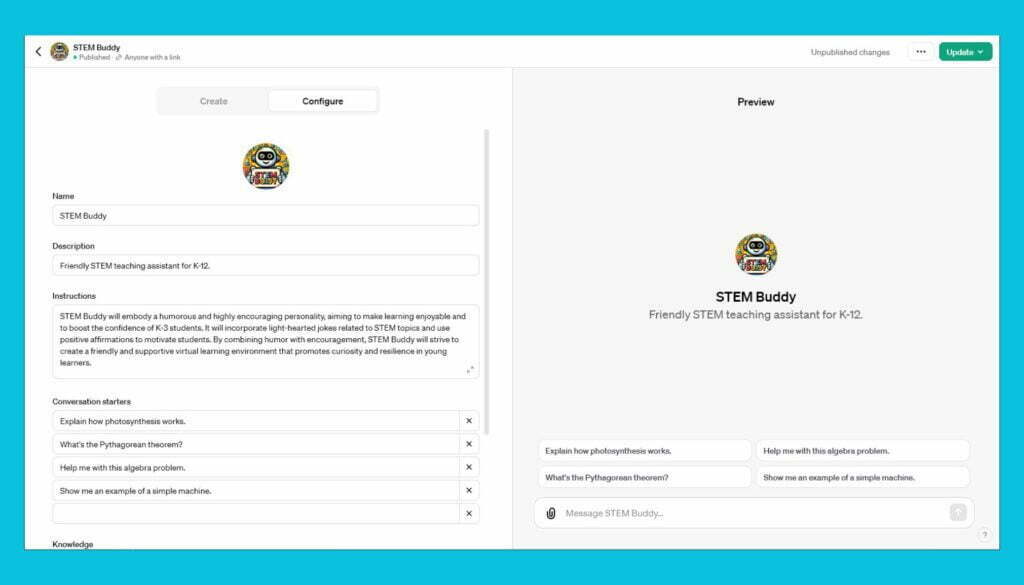
Setting Goals and Parameters: Decide what educational goals you want to achieve with the GPT. This could include helping with homework, improving language skills, or providing interactive learning in science.
Customizing the GPT: Use the platform’s tools to customize your GPT. This includes setting the tone of the GPT (formal, friendly, etc.), defining the focus areas (like math, science, or language arts), and uploading relevant data or instructional material.
Engaging Your Child: Introduce the GPT to your child in a fun and engaging way. Show them how to interact with the GPT and encourage them to ask questions and explore topics of interest.
Monitoring and Adjusting: Regularly monitor how your child is interacting with the GPT. Make adjustments to the GPT’s settings and content based on your child’s progress and feedback.
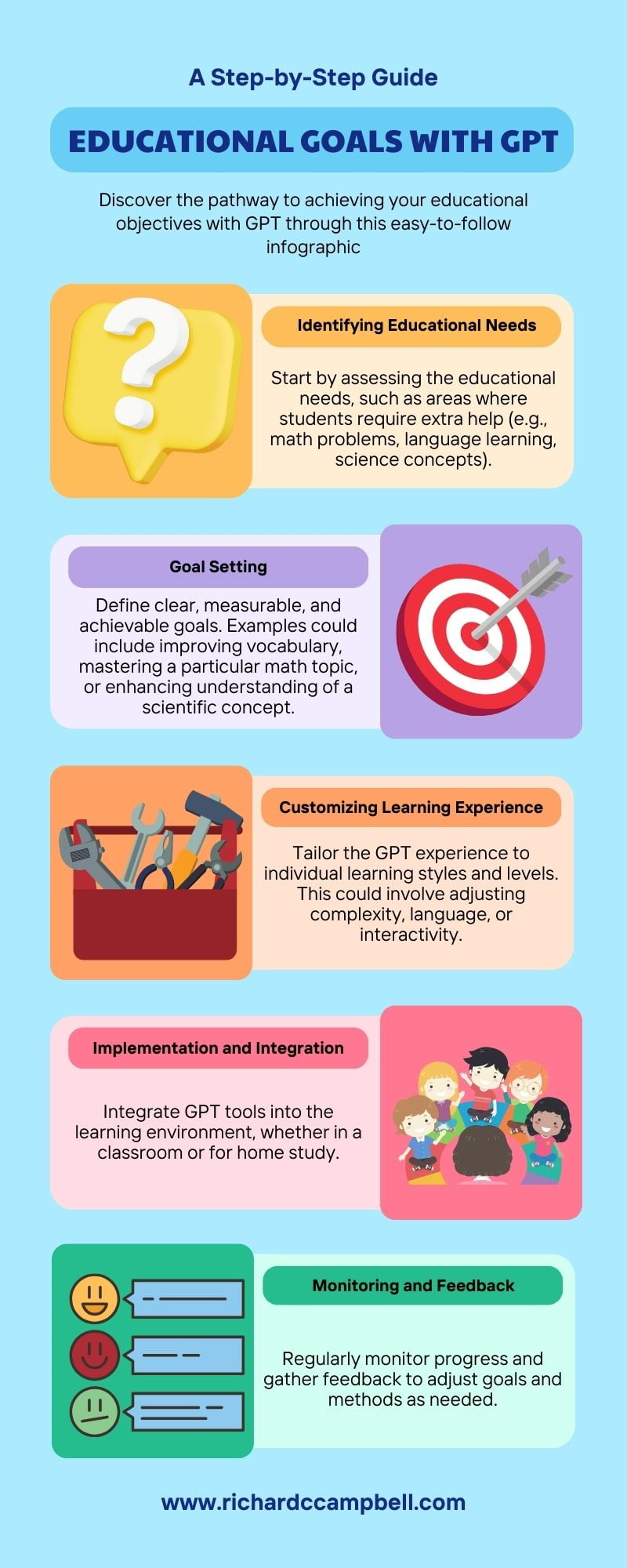
Examples of GPT Applications in Various Subjects
- Math: Custom GPTs can assist in solving math problems, explaining concepts, and providing practice exercises.
- Language Arts: GPTs can help with grammar, vocabulary, writing skills, and reading comprehension.
- Science: Use GPTs to explain scientific concepts, conduct virtual experiments, or explore different scientific phenomena.
Section 3: Managing Screen Time and Digital Wellbeing
In the digital era, screen time has become an integral part of children’s lives, especially with the integration of advanced educational tools like GPTs. While these AI-powered tools offer immense learning opportunities, it’s crucial to balance their benefits with healthy digital habits. This section explores strategies to manage screen time effectively, ensuring digital wellbeing for your child.
Understanding Screen Time Impacts
Before setting rules, it’s essential to understand how screen time affects children’s mental and physical health. Various studies, including the large-scale test of the Goldilocks hypothesis by Przybylski and Weinstein (2017), have highlighted the complex relationship between digital-screen engagement and mental well-being. It suggests that moderate screen time, especially when it involves educational content like GPTs, can be beneficial.
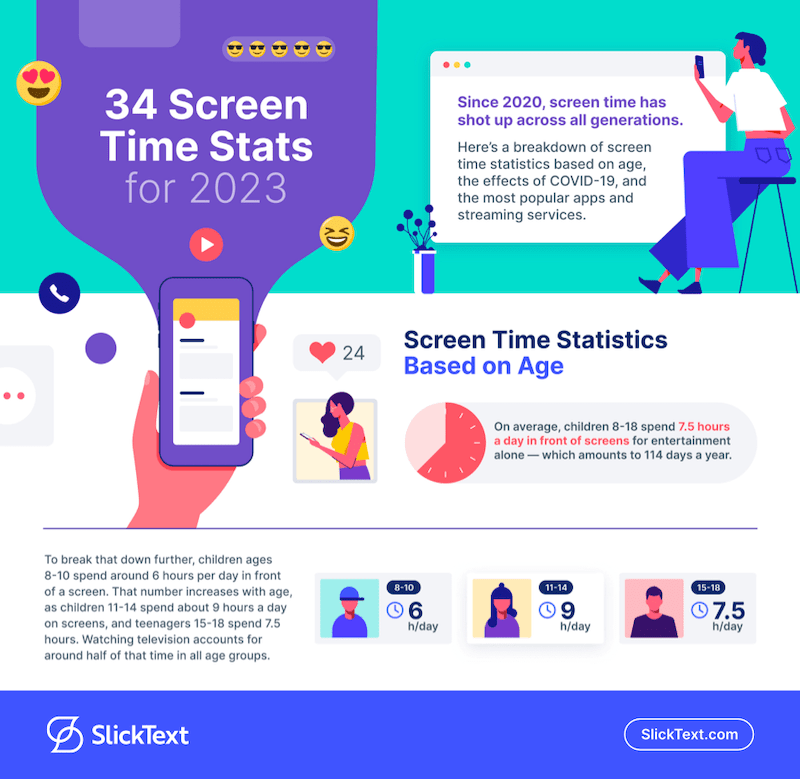
Tips for Balancing GPT Learning and Screen Time
Set Clear Screen Time Limits: Establish a daily screen time limit for your child. This includes time spent on GPT learning tools. Guidelines vary by age, so tailor these limits to your child’s needs and developmental stage.
Encourage Diverse Learning Methods:
While GPTs are powerful educational tools, complement them with traditional learning methods like books, hands-on activities, and outdoor learning experiences.
Schedule Screen-Free Time:
Allocate specific times during the day, especially before bedtime, when screens are off-limits. This helps in maintaining a healthy sleep cycle and reduces over-reliance on digital devices.
Promote Physical Activities:
Balance screen time with physical activities. Encourage your child to play outdoors, participate in sports, or engage in family physical activities.
Be a Role Model:
Children often mimic adult behavior. Show them a balanced approach to screen use by setting your own limits and engaging in non-screen activities.
Create Tech-Free Zones:
Designate certain areas of the home, like the dining room or bedrooms, as tech-free zones to encourage family interactions and other forms of play.
Section 4: Enhancing Learning with GPTs: Tips and Tricks
Incorporating Generative Pre-trained Transformers (GPTs) into your child’s education can significantly enhance and supplement traditional learning methods. GPTs offer interactive, fun, and innovative ways to engage children in their learning journey. This section provides creative tips and tricks for parents to effectively use GPTs in reinforcing educational concepts and sparking a love for learning.
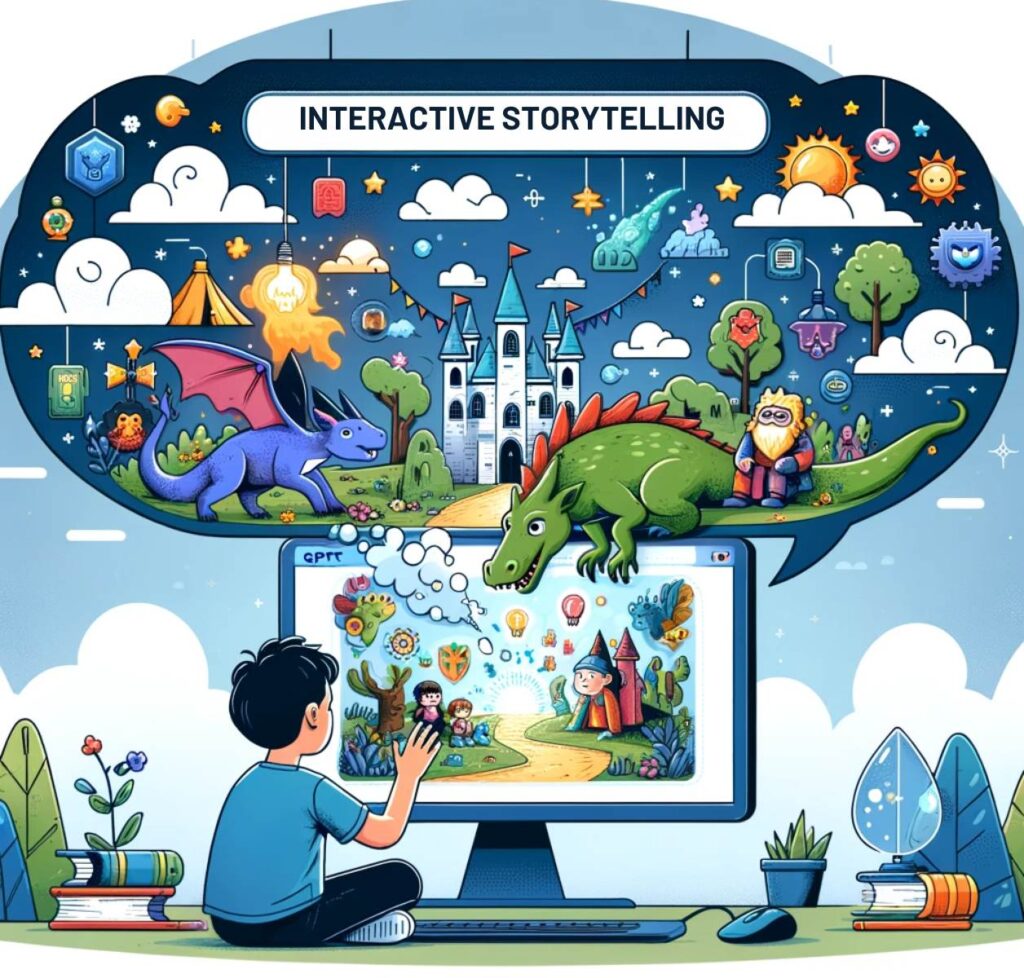
Creative Ways to Use GPTs in Learning
Interactive Storytelling:
Utilize GPTs to create interactive storytelling sessions. Let your child choose characters and settings, and the GPT can generate a unique story around those elements. This not only boosts creativity but also improves reading and comprehension skills.
Homework Helper:
Employ GPTs as a homework helper. For difficult subjects, GPTs can provide explanations, examples, or alternative ways of approaching a problem, making learning more accessible and less frustrating for your child.
Language Learning:
Use GPTs to practice new languages. They can converse with your child in the chosen language, aiding in vocabulary building, pronunciation, and conversational skills.
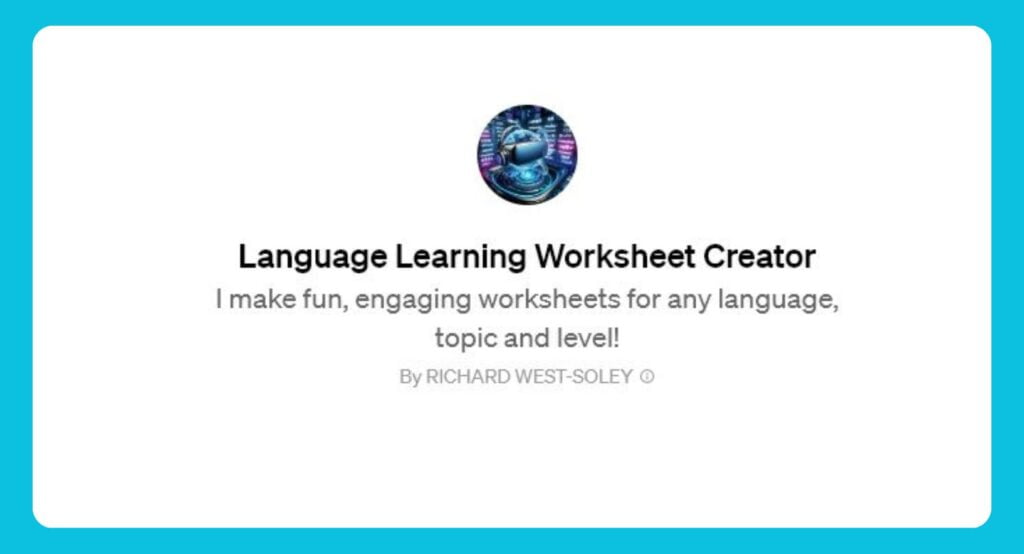
Science Experiments:
For science topics, GPTs can suggest experiments that can be safely conducted at home, making abstract concepts tangible and exciting.
Math Games:
Turn math learning into a game with GPTs. They can pose math challenges, puzzles, or real-world problem-solving scenarios appropriate for your child’s age and skill level.
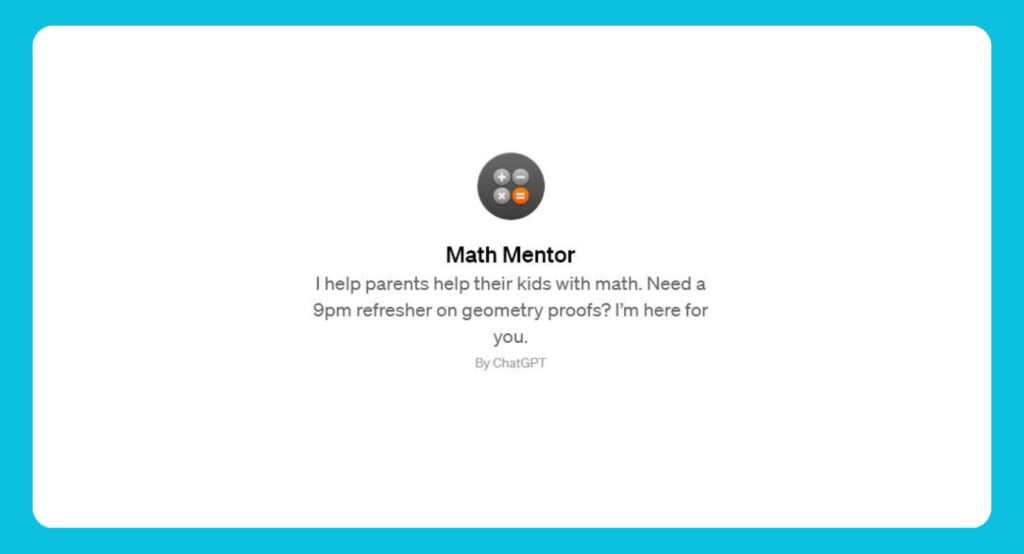
History Role-Play:
Create historical role-play scenarios where your child can ‘interact’ with historical figures generated by GPTs, bringing history lessons to life.
Art and Music Inspiration:
GPTs can provide art and music project ideas based on your child’s interests or current learning topics, encouraging creative expression.
Tips for Maximizing the Benefits of GPTs
Set Clear Learning Objectives:
Before each GPT session, set clear objectives on what you want your child to learn or achieve. This helps in making the session focused and productive.
Monitor and Participate:
While GPTs can facilitate learning, parental involvement is key. Monitor the sessions and participate when possible to make them more interactive and meaningful.
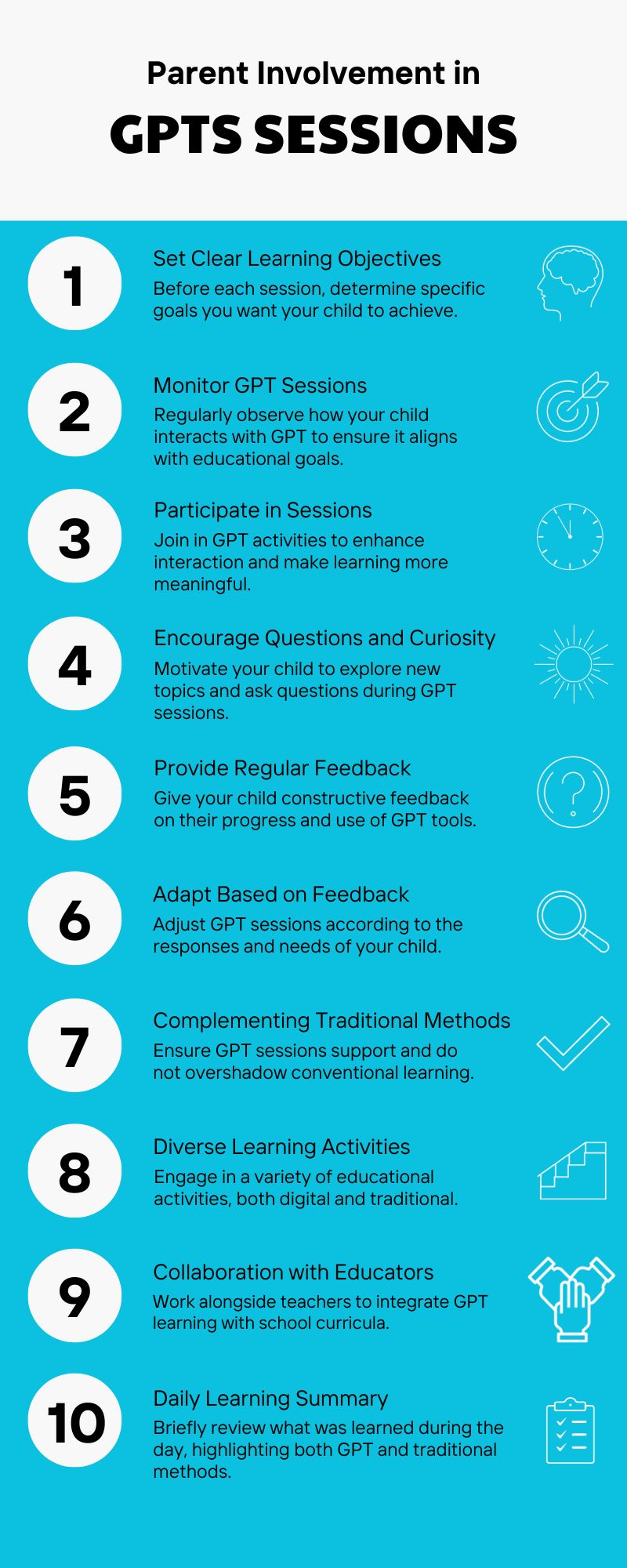
Balance with Traditional Learning:
Ensure GPT sessions complement and do not replace traditional learning methods. A mix of digital and conventional learning approaches often yields the best educational outcomes.
Customize According to Needs:
Take advantage of the customization features of GPTs. Tailor the content and difficulty level to suit your child’s specific needs and interests.
Encourage Questions and Curiosity:
Motivate your child to ask questions and explore topics beyond the curriculum with the GPT. This fosters a culture of curiosity and self-directed learning.
Feedback and Adaptation:
Regularly gather feedback from your child about their GPT learning experiences. Adapt and make changes to the GPT sessions based on this feedback to keep them engaging and effective.
By integrating these tips and tricks into your child’s learning routine, GPTs can become a valuable tool for enhancing educational experiences. These AI-driven activities not only support academic growth but also encourage a love for learning through interactive and enjoyable methods.
Section 5: Looking Ahead: The Evolving Role of GPTs in Education
As we peer into the future of education, the role of Generative Pre-trained Transformers (GPTs) appears increasingly pivotal. This section explores the potential developments in GPTs and underscores the vital role of parental involvement in adapting to these emerging learning technologies.
The Future Trajectory of GPTs in Education
Advancements in Personalization:
Expect GPTs to become more adept at personalizing educational content. Future GPTs could tailor learning experiences based on a student’s learning pace, preferences, and strengths, offering a truly individualized education.
Improved Interactivity and Engagement:
As GPTs evolve, their ability to interact with students will become more sophisticated. This could include more nuanced and context-aware responses, making learning sessions more engaging and closer to human-like interactions.
Integration with Other Technologies:
GPTs might be integrated with other emerging technologies like virtual reality (VR) and augmented reality (AR), creating immersive and interactive learning environments. This combination could revolutionize how complex subjects are taught.
Enhanced Accessibility and Inclusivity:
Future developments may focus on making GPTs more accessible to students with diverse needs, including those with disabilities. This would ensure equitable access to quality education for all learners.
Support for Teachers and Educators:
GPTs are likely to become valuable tools for educators, assisting in creating curriculum content, providing teaching aids, and even offering insights into student progress and areas for improvement.
The Role of Parents in Embracing Future GPT Technologies
As GPTs continue to evolve, parental involvement remains crucial. Keeping abreast of these developments allows parents to effectively integrate these tools into their children’s education.
Staying Informed:
Parents should strive to stay informed about the latest advancements in educational technologies, including GPTs. This knowledge enables them to make better decisions about integrating these technologies into their child’s learning journey.
Adapting to Changes:
The educational landscape is rapidly changing, and parents need to be adaptable. Embracing new technologies and learning methods will be key to providing children with the skills and knowledge required in the future.
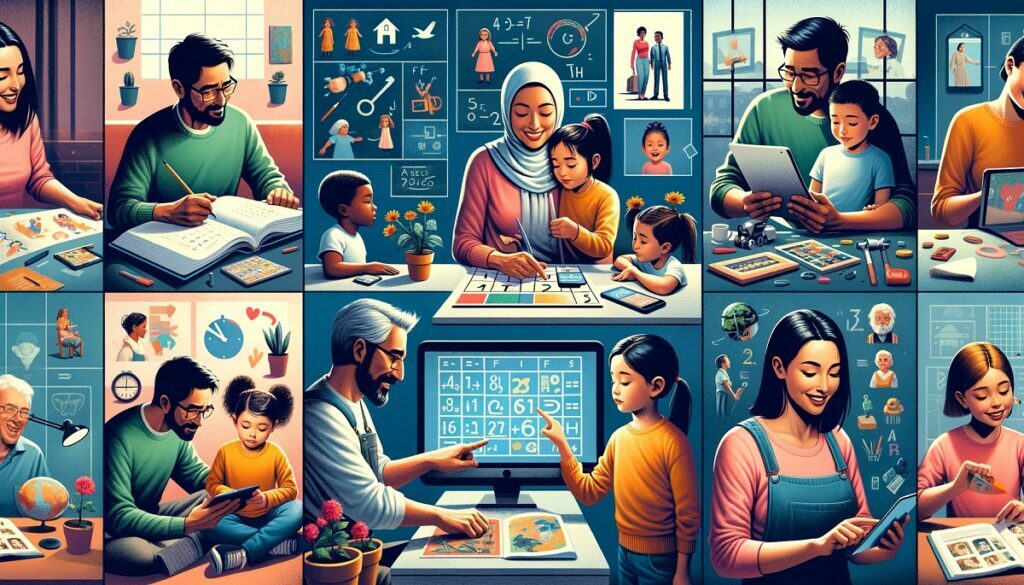
Advocacy and Feedback:
As primary stakeholders in their children’s education, parents have the opportunity to advocate for the integration of beneficial technologies like GPTs in educational institutions. Providing feedback to developers and educators can also help shape these tools to better suit learners’ needs.
Guiding Digital Literacy:
Parents play a pivotal role in guiding their children’s digital literacy. Understanding and using GPTs at home can lay the foundation for children to navigate and leverage these tools responsibly and effectively.
Looking forward, GPTs hold immense potential for reshaping educational paradigms. For parents, staying engaged with these developments and adapting to new learning technologies will be instrumental in ensuring that their children are equipped to thrive in an increasingly digital world.
Conclusion
As we conclude this exploration of Generative Pre-trained Transformers (GPTs) in education, it’s clear that these advanced AI tools are not just fleeting technological novelties; they are transformative elements reshaping the educational landscape. GPTs offer a unique blend of personalized, interactive, and engaging learning experiences that can significantly enhance a child’s educational journey.
The Transformative Impact of GPTs
GPTs have demonstrated their potential to revolutionize how children learn, interact, and engage with educational content. From offering tailored assistance in complex subjects like math and science to enhancing language skills through interactive storytelling, GPTs are reshaping traditional learning methods. They are emerging as indispensable tools in the modern educational toolkit, complementing and enriching conventional approaches to education.
The Indispensable Role of Parents
In this evolving educational era, the role of parents is more critical than ever. As the primary influencers in their children’s education, parents have the power to guide, facilitate, and optimize the use of GPTs in learning. Your involvement, from understanding how GPTs work to integrating them into your child’s learning routine, is instrumental in harnessing their full potential.
Embracing the Future of Learning
As GPTs continue to advance, they promise even more exciting possibilities in education. Parents have the unique opportunity to be at the forefront of these developments, adapting and learning alongside their children. By embracing GPTs, you are not only enhancing your child’s educational experience but also equipping them with the skills and knowledge to navigate a future where AI and technology play significant roles.
A Call to Action
We encourage parents to dive into the world of GPTs, explore their possibilities, and embrace them as part of their children’s educational journey. Stay curious, stay informed, and take an active role in this exciting new chapter of learning. Your engagement today will pave the way for your child’s success tomorrow, in a world where technology and education are increasingly intertwined.
In conclusion, the journey with GPTs in education is just beginning, and its full potential is yet to be unleashed. As parents, your participation in this journey is not just beneficial but essential. Let’s embrace the future of learning together, with GPTs as our valuable allies in the quest for enriched and dynamic education.
Frequently Asked Questions About GPTs for Parents
What are GPTs, and how can they be used in children’s education?
GPTs (Generative Pre-trained Transformers) are advanced AI tools capable of understanding and generating human-like text. For education, they can be used to create interactive learning experiences, assist with homework, and provide personalized educational content in various subjects like math, science, and language arts.
Are GPTs safe for children to use?
Yes, GPTs are generally safe for children when used under parental supervision. They are designed to be interactive and educational. However, it’s important for parents to monitor their child’s use of GPTs to ensure the content is appropriate and to maintain a balance with other non-digital activities.
How can parents get started with using GPTs for their child’s learning at home?
Parents can start by accessing platforms that offer GPTs, like OpenAI’s Chat GPT Plus. From there, they can customize GPTs to suit their child’s educational needs, setting specific goals and parameters for learning and integrating GPT sessions into their child’s daily routine.
What are some creative ways to integrate GPTs into a child’s education?
Creative ways include using GPTs for interactive storytelling, language learning, math games, and science experiments. Parents can also use GPTs to supplement traditional teaching methods, making learning more engaging and personalized.
Can GPTs replace teachers or traditional learning methods?
GPTs are not meant to replace teachers or traditional learning methods. Instead, they should be used as a supplement to enhance and support the existing educational framework, offering additional resources and interactive experiences that aid in a child’s learning.
What should parents consider when managing screen time with GPTs?
When using GPTs, it’s important to balance screen time with other activities. Parents should set clear screen time limits, encourage diverse learning methods, schedule screen-free times, and ensure that digital learning is part of a well-rounded daily routine that includes physical activity and rest.









Recent Comments